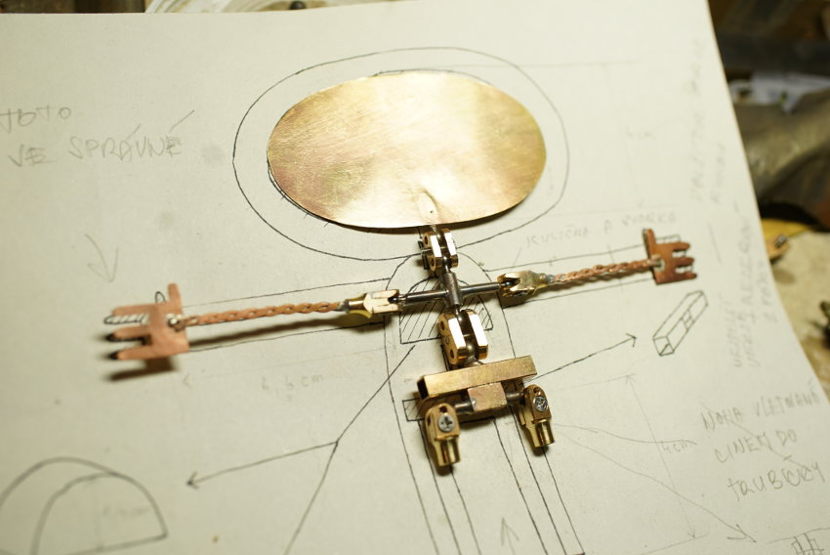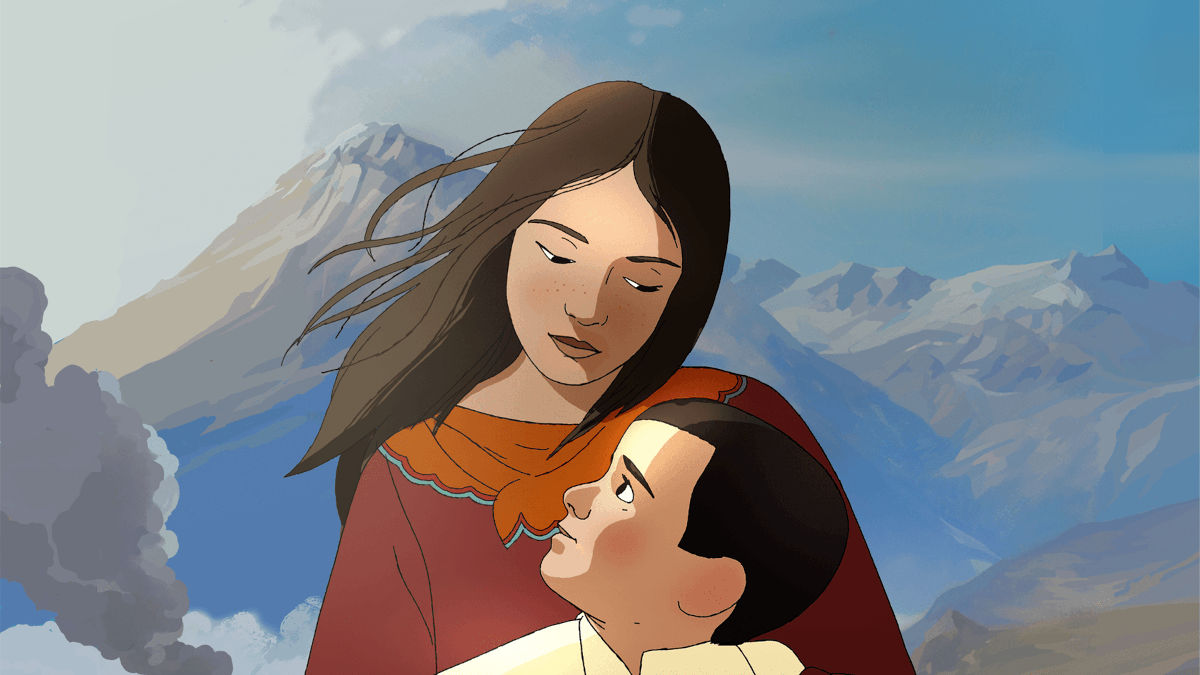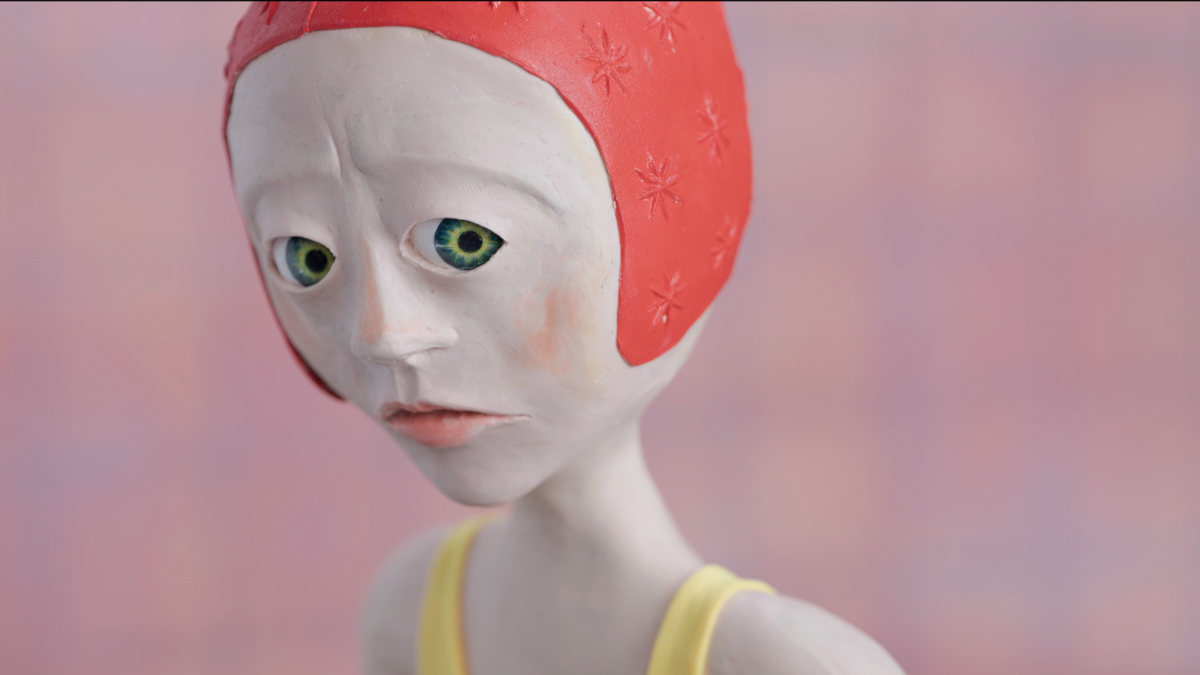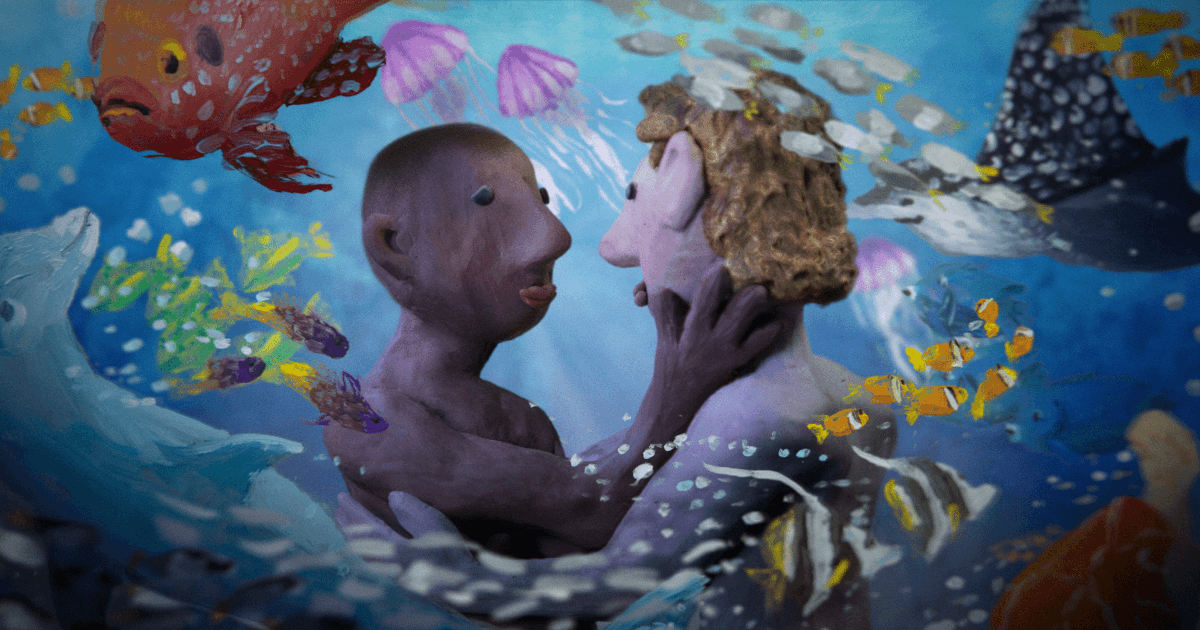The Kite by Martin Smatana
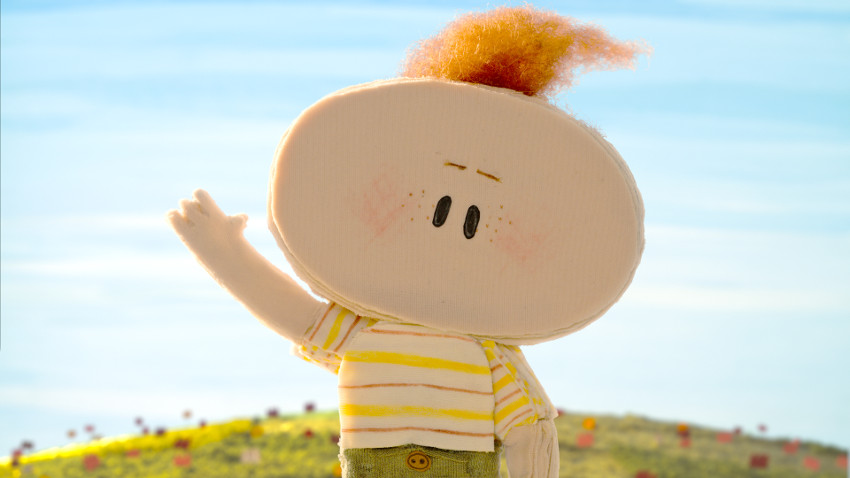
Sometimes you can capture the hearts and minds of people with a single kite. The eponymous stop-motion film The Kite by Slovakian animation director Martin Smatana has certainly captured (even as a work in progress) the attention of the independent animation world.
Stylistically influenced by the Oscar-nominated Boy and the World by Alê Abreu, it nevertheless goes into a more interpersonal territory. A little boy visits his old grandfather in the countryside and they fly a kite together. They are both made out of layers, an age symbolism. The boy has many of these layers, because he has all his life before him. But grandfather, on the other hand, has already lost most of his layers and he has only a few left.
The film premiered at the 69th Berlin Film Festival (Generation KPlus), and has won both at Annecy Festival (Young Audience Award) and Fest Anča (Best Slovak Animation Award), after going to a highly successful festival run.
Watch 'The Kite'
ZF: What is the story of The Kite and how it has evolved from its original conception?
MS: When I was a little kid, I asked adults a lot of questions, especially about where people go after they die. My grandpa told me that as old people get older, they also get thinner. At the end of their life, they are as thin as a sheet of paper, so one day the wind blows them and takes them up to the sky.
In 2011 Alzbeta Remencova wrote the very first draft of the story about a small boy, who gets a kite from his old grandfather. I decided to work with this metaphor, I started to develop a story, rewriting it all the time. It was hard for me to talk about such a difficult topic, but still, it was important for me to have joy and hope in a story about death. I decided to talk about this topic without using a spoken word, just by gestures and body language.
ZF: Was it a conscious choice not to show the boy's parents?
MS: During the process of development we were talking a lot with the DoP and editor about whether to show the boy´s parents or not. For a couple of months, we were writing the story with the parents in it, but in the end, just before shooting, we decided to throw the parents away from the story, and focus just on the relationship between the boy and his grandfather. I think it was a good choice. Sometimes children at festivals ask us why the boy does not have parents, and we always say that of course he does, but they have to go to work so they send him to visit his grandfather:)

Recording the boy's voice
ZF: Was it deliberate not to show the interior of the grandfather's home from the start?
MS: At first, boy visits his grandfather in the summer and we don’t show the interior, because they spend all the time outside. During the second time the boy visits his grandpa, it is already autumn and the weak grandpa rather keeps himself inside apart of strong wind. This is the first time when the audience can see where the grandpa lives. When the boy visits the house for the third time, the house is empty. There is only a child drawing of himself and his grandfather hanging on the wall.
ZF: Regarding production, The Kite was presented (and awarded) at Animarkt StopMotion Forum and Visegrad (now CEE) Animation Forum. What did you get out of these?
MS: Already in the sole event of presenting the film, the pitching preparations, the need to formulate the idea to myself, to sort it out. Just working on the presentation moves the project forward. They can be particularly helpful during development, as you can meet well established script editors who can help you identify the strong and the weak points. I discussed the story with Philip LaZebnik, scriptwriter for Dreamworks, at Anifilm in Třeboň. It was he who suggested leaving out a whole flashback passage I then had scripted and sticking with the simplest storytelling model possible.
At Animarkt I got very valuable feedback, especially from Nancy Denney-Phelps, who led one of the training sessions about how to pitch and promote the project. Award from Animarkt was a kickstarter! Thanks to this award we shot the film in studio CeTA in Poland, which allowed us to go bigger and to even make shots we otherwise couldn’t have managed. It suited us more than well, as The Kite deals with flying.

Staszek Szostak and Piotr Chmielewski animating The Kite
ZF: Do you think your style has evolved from your previous film?
MS: I am not sure if I have some particular style that would be typical for me. I rather try to conform the style according to the story – in the case of my previous film Rosso Papavero it was to make a dark and magical atmosphere full of dreamlike glittering attractions. In The Kite, we decided to make almost all sets from textile materials, because we wanted to move the surface of those textiles and express the wind, which is almost the third character in the film.
ZF: I was watching the making of, and it seemed that equal time was spent between pre-production, production and post-production. But I was wondering what occupied you the most.
MS: Each stage has its own traps and problems to be solved. Sometimes I felt like playing a computer game – when you finally manage to complete the level of development, you go to the other level – building the puppets, sets etc. And for a couple of months, you just try to solve all the problems that art direction and set construction bring.
Boy Armature for The Kite
If you manage, the next level opens –
The shooting was definitely the hardest part for all of us because due to several deadlines we had very limited time, so we were usually shooting 17-18 hours per day including weekends. Sometimes, it happened that we have not seen sunlight for 4-5 days, so we were eating vitamin D in tablets. We managed to shoot this 13- minute film in about 2 months.
After that, the last level opened – the post-production, which took us 5 more months. We finished it just two weeks before premiere at Berlinale. The mission was completed when we saw the final film on the big screen for the first time.
ZF: Do you prefer stop-motion because of its tactile, warm qualities, or because you can actually construct a lot of things by yourself, as you and your partners did in The Kite?
MS: Well, both. I do stop motion animation because I like working manually, and I like to use different materials and combine them - I like the simple fact that it is handmade and that everything you see in the film exists in reality. That you can touch it and see the materials used. One of my first records in the family book of children’s quotes is my birthday present request: “I want a pile, a chisel and a grip.” When I was seven years old, I made these small figurines – an army that I took picture of, moved it a bit, took another picture, move it again… I had no idea one call this “animation” not to say “puppet animation” and that one day I will make a living doing it.
ZF: Why do you use the accordion as one of your main musical instruments here?
MS: Because a couple of years ago, one old man taught me the basics of playing the accordion, and, since then, I fell in love with this instrument. During the process of shooting the Kite, the DoP Ondrej Nedved told me that he knows a composer from Belarus which composes his music on the accordion. He played some of his songs and there were no doubts anymore. His name is Aliaksandr Yasinski.
ZF: Did you have a kite when you were young?
MS: Yes, and I still have some:)
ZF: Where do you want to go when you die?
MS: Well, the only thing that we can do is to imagine what it might look like after death. I imagine it as a space full of very soft and fluffy clouds. And you can jump in them, dive, and swim in them. So in the end it's not so bad.
ZF: And what would you like to be when you grow up?
MS: When I grow up, I would like to do what I actually do – films for children. When I was about 12 years old, my parents took me and my brother to the cinema for the premiere of Finding Nemo. When the film finished, all the people left the cinema, only me stayed sitting in the chair. I was so moved and fascinated by all that beauty, that I asked my father if there are really some people in the world who do this as a full-time job, being paid for it. And he said, “I guess so, I think it is called animator. ”. And I said – so this is what I would like to do in my life! I would like to be a director of animated films!
Film Review (Vassilis Kroustallis)
For those who have seen The Kite, one thing that pops up immediately is the really close relationship that is immediately established between the child and his granddad. It surely helps that the film unfolds in four seasons (so time here is fragmented in a very identifiable way), but space is the main force of direction here. The hill where granddad's house is located (actually a cylinder, a copious thing to make, but ultimately a rewarding experience) is what isolates both characters from the rest of the world, and concentrates on the love (the kite) that passes on from older to younger generations. On the other hand, the house itself reminds us of our necessarily empty belongings, a checkpoint of reality (its window blinds bear a nod to Joseph Wallace's The Man Who Was Afraid of Falling). A third factor, the sky with its fluffy, sugary clouds is where our collective dreams of everlasting life can actually be implemented.
Animation movement is here communicated from characters to the environment, and the personalized kite itself is the tool to move back and forth from reality to a touching dreamland. Empathetic without being mawkish, self-conscious in its fantasy, and hand-made up to the last detail, The Kite gives the powerful message that if you wish to carry on with your memories and love, you need to construct them first, both as a story and its visualization.
CREDITS
The Kite, 2019
Written and directed by Martin Smatana
Original Story - Alzbeta Remencova
Director of Photography: Ondřej Nedvěd
Editing: Lucie Navrátilová
Animation: Martin Smatana, Martyna Koleniec, Piotr Chmielewski, Łukasz Grynda, Matouš Valchař, Stanisław Szostak
Music: Aliaksander Yasinski
Sound Design:Viera Marinová
Production Design: Martin Smatana
Visual Effects: Michal Šabík
Production Manager: Jakub Rálek
Producer: Peter Badač
Co-production:FAMU, Prag, CeTA, Breslau


